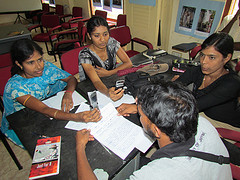I suppose it’s so easy to get comfortable when we reach a certain level of success at personal and/or organizational level. It is important to celebrate our accomplishments and all the things that got us to where we are, but there’s a danger in stagnating, being conservative. But the world does not wait for anyone. Specifically in student affairs, our world is changing quickly. Driven by our changing student demographics, economic difficulties and technologies, the way our organizations operate must change, at least try to keep up, or we fail to serve our students.
I spend a lot of time following trends in how higher education and our students use technology, including social media and mobile computing. This comes from the realization that if my organization (a student affairs IT shop) fails to realize the demands and wishes of our constituents, I would not be doing my job as a leader in my organization. Does that mean that we can and will always meet our constituents’ demands and wishes? Of course not. There are always more work to be done relative to our resources. It’s hard enough to provide day-to-day support and “keeping the lights on”, tasks that while our users may not always see are critical. As difficult as it is to change our ways, to go beyond what we can support, the reality is that if we fail to look at what the customers demand of us, our organization is in danger of being replaced with other options. We no longer live in the world when our customers must go through IT for every single technology requests. Cheap or even free cloud based services are now viable solutions. Our customers use their mobile devices to access the web and social networks. As an IT organization, do we take the role of the department that is seen as obstructionist to a point where customers no longer want to work with us or one that is a willing partner to progress?
I feel considerably lucky that we have a person at the top of our organization, Vice Chancellor Dr. Young, who is a champion of change and a true student advocate. He is a visionary who will freely admit that while he may not always know how to get to where we need to get to, he does know when it’s time to change, to take a new direction. An organization’s ability to be open and accepting to change is rooted in its culture and leaders like Dr. Young plays a huge influence on how the culture is shaped. As those working in our organizations, I also think we have personal responsibilities to be open to change. Failure to change has its consequences.


